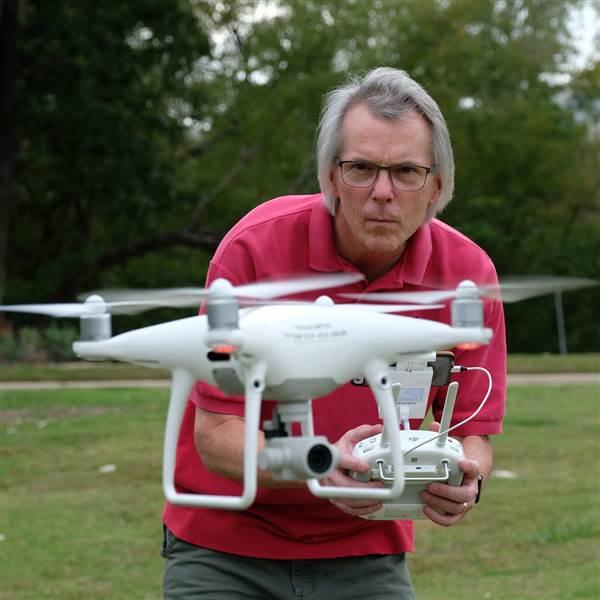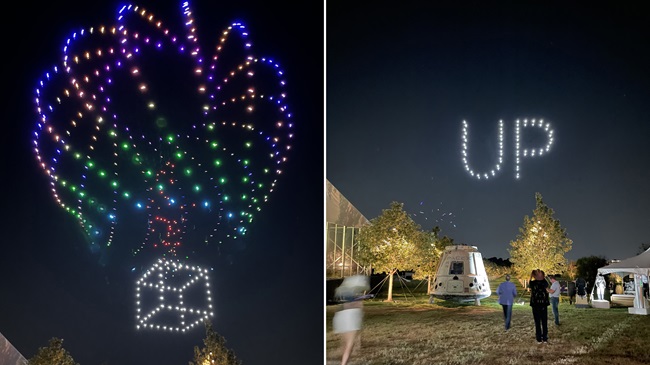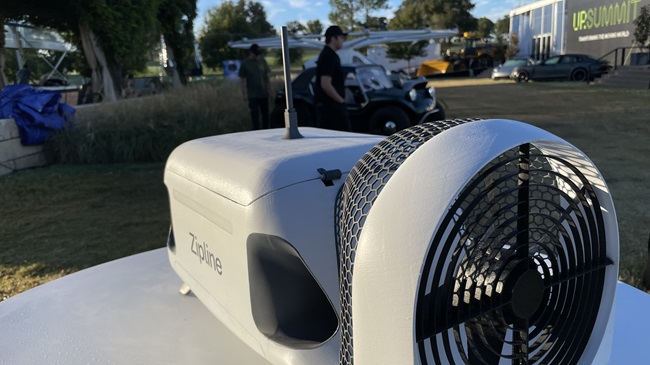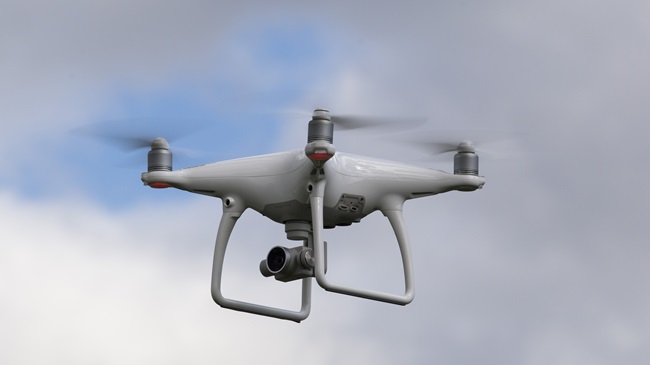Going big in Greenland
(This is not a real estate gig)
Studying climate change with an unmanned aircraft in Greenland requires custom gear, grant funding, and grit.
Emily Arnold, Assistant Professor of Aerospace Engineering at the University of Kansas, has landed a five-year, $609,000 National Science Foundation grant to customize an unmanned helicopter with two radar arrays designed to explore Greenland’s Helheim Glacier in 2021.
Carrying two custom-built radars powered by the aircraft's electrical system, Arnold and her fellow researchers (including a graduate student) plan to not only map the glacial surfaces, but probe hundreds of meters into the ice as well. This kind of detailed data collection is not possible with satellite imagery, which covers great expanses but with less precision (and far less resolution) than low-and-slow radar grid mapping can deliver.
Arnold and other University of Kansas collaborators hope to gather data that will help scientists better understand the physics and dynamics of ice. “We want to know what [glaciers'] contribution is to global sea level rise” will be, says Arnold.
An environment of brutally cold temperatures, winds that can reach 55 knots, a 10-pound payload, and required mission endurance longer than 25 minutes call for something more capable than the typical off-the-shelf quadcopter, or even hexacopter.
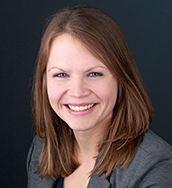
Enter the AeroVironment Vapor 55. Built for industrial, commercial, and military applications, the Vapor 55 helicopter is over six feet long from leading blade to tail rotor. It weighs in just at the 55-pound limit for Part 107 operations, can carry an 11-pound payload, and can fly for nearly an hour in gusty winds that would push many quadcopters backward.
"I knew I needed a platform that was robust enough that it could withstand somewhat significant gust loads," Arnold said. She described the fate of some smaller drones operating near her colleagues on an earlier Greenland study: “I think they had about three of those with them, and within three days they had crashed three aircraft.”
Part of the logistical challenge Arnold and her team will tackle with the NSF funding is how to integrate custom-designed radars and antennas into the Vapor. Radar is only as good as its antenna. The low-frequency antenna on the Vapor, which will peer deep into the ice, will likely need to serve double duty as the landing gear because there is only so much room to work with. Arnold explained that radars capable of this type of mission are rare, so nothing off the shelf is suitable.
The helicopter will fly largely by autopilot and map a grid much as conventional drones fly programmed routes. There will be no video feed from the aircraft, but it will relay its GPS position to the pilot’s screen. Most of the missions will be line-of-sight. Changes in altitude and course will rely on knowing the terrain and good mission planning. The Danish government has its own regulations similar to the FAA rules that will need to be adhered to.
Winds aren’t the only go/no-go factor in play once in Greenland. Despite AeroVironment’s assurances that the batteries should function, the humans are another factor.
“As a human being, you don’t want to stand outside for hours and hours with negative 10 outside. You do need to be able to have your wits about you and be able to react to take control of the aircraft if you need to," Arnold said. During a three-week expedition in Greenland, that might translate to only a handful of flights if the weather doesn’t cooperate. Losing one's bearings is easy if everything is white.
The crew will also have to obtain a unique FCC permission for testing in Kansas to allow the craft to “radiate,” or beam radar downward. Now that’s one you don’t routinely find on the waiver list.
Arnold and her research team will be working to wed the required imaging hardware to the aircraft and test it as much as possible before actually venturing into the subfreezing temperatures. Some aspects will be trial-by-fire though, since, well, Kansas is not known for glaciers. Winters can be rough, but not Greenland rough. Despite an autopilot’s involvement, Arnold says there will be plenty of local flying done to ensure they are comfortable with the platform and the payload. “You don’t want to be figuring things out when you’re on the side of a glacier trying to take measurements.”
The university has a drone pilot who will make the trip and be chiefly responsible for the flights and field repairs. There is no spare or backup Vapor due to cost considerations.
AeroVironment offers a training course for the Vapor customers. Though Arnold wants to be trained as well, her passion for drones lies more in their potential contributions to research than in actually flying them.
As a girl, Arnold had an interest in math, and gravitated toward space and aircraft. Ultimately she combined all of these to become an aerospace engineer, and she now spends time outside her university teaching duties encouraging kindergarten through twelfth-grade students to take science, technology, engineering, and math courses. She works with organizations like DoD Starbase, an outreach program funded by the Department of Defense aimed primarily at youngsters to interest them in STEM. Arnold attended a Starbase program as a fourth grader, and she credits it as a spark that helped send her on her way. As the only female on the KU aerospace engineering faculty, she is motivated to see more girls follow.
“One of the reasons I am so excited about this research, is the sense of adventure associated with this work. We are going to camp on the side of a glacier in Greenland and fly a UAS over it. It’s this aspect of the research that I love to leverage when I do outreach presentations to get K-12 students excited about engineering. I mean, how much more exciting can engineering work get?"
